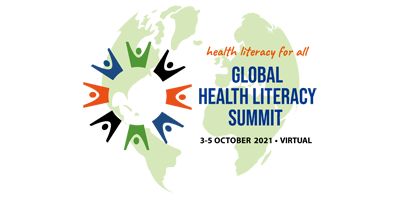Abstract Preview
Abstract
|
Title A systematic review of health literacy measures used in antenatal cohorts – what have we actually measured? |
|
Type Oral Presentation Only |
|
Theme Global Health Literacy Summit 2021 |
|
Topic Health literacy and clinical healthcare settings (incl primary care) |
Authors
|
Main Author Casey Nottage1 3 |
|
Presenting Author Casey Nottage1 3 |
|
Co-Author Jennie Louise1 Sarah van der Wal2 Jodie Dodd1 |
Authors' Institution
|
Department / Institution / Country Robinson Research Institute / University of Adelaide / Australia1 Obstetrics and Gynaecology / Bendigo Health / Australia2 Clinical Governance / Bendigo Health / Australia3 |
|
Abstract Content (abstracts should be written in Size 11 font, Arial font style) Background: Pregnant women are given vast amounts of information and are required to navigate parts of the health system they may not have previously encountered. The aims of this study are to systematically identify, investigate and summarise the studies that have measured health literacy in antenatal cohorts and its relationship to maternal health outcomes, knowledge or behaviours; to describe the way the measures have been used; and investigate what domains of health literacy have been covered. Methods: This review followed PRISMA guidelines. Peer-reviewed research articles indexed in MEDLINE, EMBASE and Web of Science were included if they: (1) described original research; (2) were full text articles published in a peer-reviewed journal; (3) measured health literacy using a previously validated health literacy or numeracy instrument not specific to any particular condition or health concern; (4) provided evidence on the relationship between health literacy and health outcomes or related knowledge or behaviours; (5) consisted of a study population that was limited to antenatal care; (6) published in English language Results: 17 articles met eligibility criteria and were included. The majority were observational in design and used a single tool to provide a direct measure of health literacy. The most commonly used tools were the TOFHLA and the REALM (including derivatives). Not all studies used categorical measures or reported results in groups of ‘inadequate’ vs ‘adequate’ health literacy; in those that did, rates of ‘inadequate’ health literacy ranged from 9.1% to 72%. The majority only covered the domains of literacy and comprehension. The majority investigated associations with health literacy measures and women’s knowledge, attitudes, beliefs and behaviours rather than clinical outcomes. Conclusions: There is limited coverage of the full scope of health literacy domains especially the more advanced and social skills such as self-efficacy, critical appraisal and navigation. Future work on the health literacy of antenatal populations should avoid a narrowly defined notion of low literacy and instead seek to understand the strengths and weaknesses of those accessing antenatal care so that care provision can be adapted accordingly. |
|
Other Topics Preferences(Maximum of two topics only and please note that the Program Committee reserves the right to decide on the final presentation format.) HL and sexual & reproductive health Research & new measures for HL
|
Requires Audio or Video system for Presentation?: Yes
